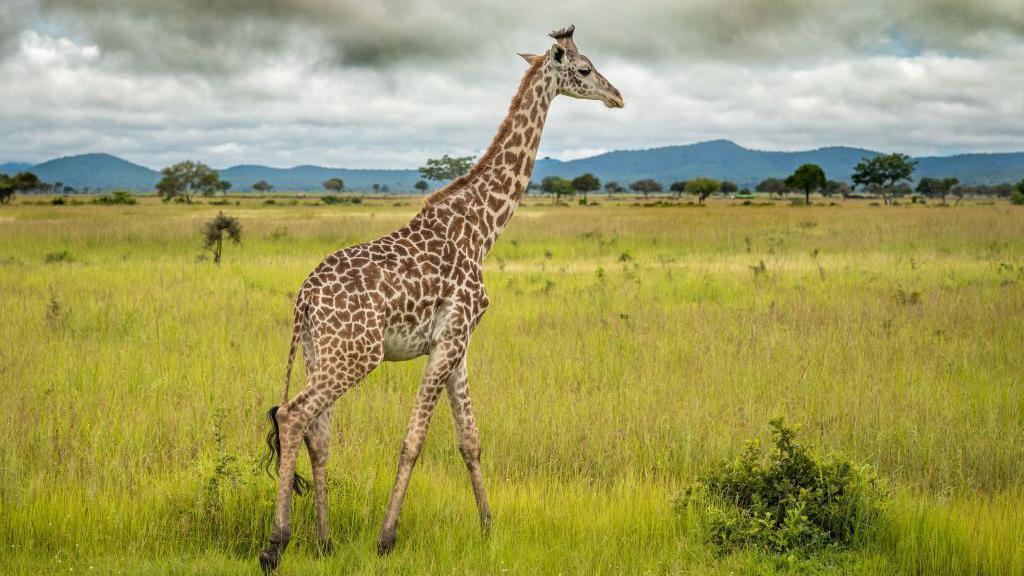There are more types of giraffes than anyone knew

'How many different kinds?'
- Published
A study of giraffes has changed how we understand our long-necked animal friends for good.
Turns out there isn't one species of giraffe as we thought, but there are four different species that have evolved over time.
These are the northern giraffe, the reticulated giraffe, the Masai giraffe, and the southern giraffe - which were all thought to be type of the same species at first.
The finding has now been officially recognised by the International Union for Conservation of Nature (IUCN), one of the world's largest environmental groups, who say that this could help efforts to protect giraffes.
More animal stories
London Zoo begins its annual animal weigh-in
- Published19 August
Seven super facts for World Giraffe Day
- Published21 June 2021
What's your favourite wild animal?
- Published8 April

Giraffes love to eat leaves high up in trees
It was originally thought that there was just one species of the animal - the giraffe - and nine subspecies, which are each different, but not different enough to be labelled as a separate species.
But after experts studied giraffe skulls and bones, the IUCN decided that differences were in fact big enough to officially recognise them as different species.
Giraffes are the world's tallest land mammal, known for their long necks, and are from Africa.
The IUCN think that Africa's rivers, valleys and desert areas could have separated different groups of giraffes from each other, meaning that they evolved in different parts of the continent into four species.
The giraffe is listed as vulnerable to extinction on IUCN's red list of threatened species, and they say the new understanding can help them conserve the creatures.
What is evolution?

Giraffes live in the wild in different parts of Africa, and one of the differences between them is the patterns of their hide
Evolution is the theory that explains how living things, including humans, developed from simple to complex life forms over millions of years.
One of the first people to make the idea popular was a scientist called Charles Darwin, who dedicated his life to writing about evolution.
The theory describes how no animal is the same and all have different features, some of which might help them survive better in their environment.
Those that have these features are more likely to thrive and pass on their features on to their kids.
Over a long, long period of time, these small changes become bigger and bigger until the species slowly changes.
